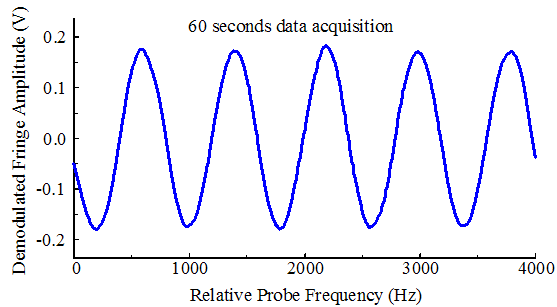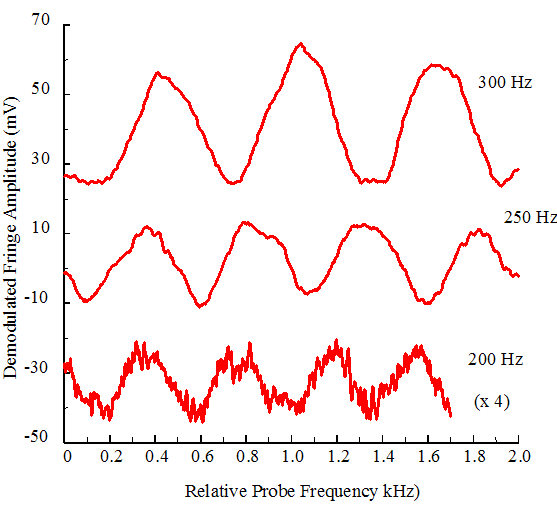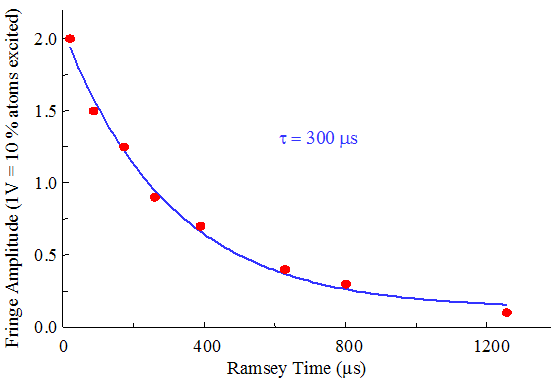

|
|
|
|
Sub-kilohertz
optical spectroscopy w/ laser-cooled Ca
atoms
|
|
|
|
|
High resolution spectra
To generate high resolution scans we increase the time between the 657 nm pulses (see Optical Ramsey Fringes w/ Shelving Detection), and scan the red frequency. Here we show a lineshape taken using millikelvin atoms with 628 ms between pulses, which corresponds to a resolution of 400 Hz (60 second total data accumulation time):

Increasing the time between pulses further yields narrower fringes (60 second averaging time):

Decay of the fringe contrast
We see that we have reached well below the natural linewidth (470 Hz) for this transition, so clearly for this spectroscopic technique the natural linewidth is not a fundamental limit. However, at sub-natural linewidths, we see a considerably reduced signal-to-ratio.� This decrease in the signal-to-noise ratio with resolution is the result of several factors: (i) atomic decay from the 3P1 state during the four pulse Ramsey sequence (ii) frequency noise due to reference cavity instabilities (this is a small contribution since our laser linewidth is less than 10 Hz for this averaging time), and (iii) ballistic expansion of the atomic sample (the millikelvin atoms move more up to 3 millimeters during the spectroscopy).� When we use second-stage cooling to reduce the atomic temperature from millikelvin to less than 10 microkelvin, we see two main changes in our spectroscopic signals.� First, the overall fringe contrast is higher since a larger fraction of the atomic velocity distribution is excited by each pulse (in this regime all atoms contribute virtually identically).� Second, with the velocity reduced by a factor of fifteen, ballistic expansion is nearly negligible, so when we perform Bord�-Ramsey spectroscopy with the ultracold atoms, the fringe amplitude decay with resolution is almost completely determined by spontaneous emission:
